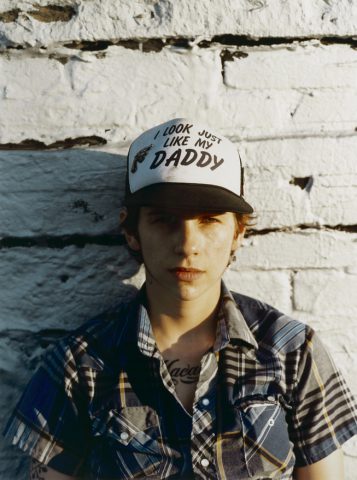The most comprehensive museum exhibit to focus on same-sex desire, Hide/Seek: Difference and Desire in American Portraiture successfully tackles the nearly insurmountable task of representing the spectrum of gay identity in portraiture.
The Brooklyn Museum exhibition, organized by the Smithsonian’s National Portrait Gallery, is co-curated by the Portrait Gallery’s David C. Ward and Jonathan Katz, director of the doctoral program in visual studies at SUNY-Buffalo. More than 100 paintings, photographs, drawings and mixed-media sculptures represent desires both explicit and coded.
The balance of abstract and figurative works illustrates the extremities in visual language. Figurative portraits far outnumber the abstract, and the primary medium throughout the mostly 20th-century exhibition is photography. Walt Whitman is lovingly depicted as homosexuality’s eminence gris in Thomas Eakins’ 1891 photo; other famous subjects include Gertrude Stein and Alice B. Toklas (by Cecil Beaton), Janet Flanner and Djuna Barnes (by Berenice Abbott), and Langston Hughes and Bessie Smith (by Carl Van Vechten). Contemporary artists like Catherine Opie and Cass Bird capture the more recent fascination with gender redefinition among urban lesbians.
Of abstract works, Marsden Hartley’s 1914-1915 work “Painting No. 47, Berlin” incorporates symbols of his lover (birthdate, initials, German army insignia) into a boldly theoretical portrait, while Andy Warhol, in “Truman Capote’s Shoe” (ca. 1957), conceptualizes the author’s flowery personality.
The visual narrative remains fresh and engaging until the last room in the exhibition. Hide/Seek includes iconic works of the AIDS era, such as self-portraits by Robert Mapplethorpe and David Wojnarowicz’s black and white video “A Fire in My Belly” (1986-1987), the same clip that stoked a censorship controversy at the National Portrait Gallery. The impact of the works’ radicalism, though, is dulled by their familiarity.
My favorite piece is Joseph Christian Leyendecker’s 1914 portrait “Men Reading,” a commercial illustration for the Arrow Collar company showing one dashing man reading the newspaper in a comfortable wingchair and another other focused on the back of the paper. At once innocent and saturated with erotic subtext, “Men Reading” shows how dependent gay and lesbian imagery is on interpretation—and how easy it is for unfriendly viewers to argue that gay identity is an indictment of the interpreter’s perverse imagination.
That implicit danger, and the thrill of liberation from it, permeates the works in this groundbreaking exhibition.
Hide/Seek: Difference and Desire in American Portraiture is on view through February 12, 2012 at the Brooklyn Museum, 200 Eastern Parkway, Brooklyn, brooklynmuseum.org


What Do You Think?